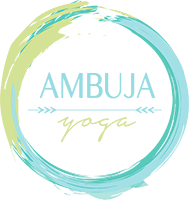If you’ve attended a yoga class or visited a Hindu or Buddhist temple you have likely heard the mantra OM or AUM being chanted. The Om mantra is the most sacred mantra in both Hinduism and Buddhism. In addition, Om is also said to be the primordial sound of the Universe. The Om mantra is the most elemental of vibrations and is considered the sound of the void.
According to Patanjali, Om, the original sound, is a direct expression of isvara or God. Therefore, when we chant Om it provides a direct link to the Divine and divine knowledge. Om connects us to the Divine in vibrational form and makes our prayers and mantras more effective by increasing pranic energy.
Where did the Om mantra originate?
Om, an ancient Sanskrit letter, first appeared in the Vedas between 1500 and 1200 BCE. The main teaching on Om from the Vedas, Upanishads and Yoga Sutras is to experience non-dual awareness.
How do you pronounce Om?
The common pronunciation of Om is to pronounce the mantra with the same “o” sound as in “home”. But there are actually three sounds that make up the mantra: A-U-M or “aaah”, “oooh”, “mmm”. The sound of OM/AUM begins at the back of the throat with the “aaah” sound and ends at the lips with the “mmm” sound. When chanting the mantra OM, it fills the entire mouth from back to front, which represents the entire Universe. Similarly, when chanting Om, one can feel its vibration deep within the body. At the end of chanting AUM there is a pause or a moment of silence. This pause represents the state known as Turiya, or Infinite Consciousness.
What does the Om symbol mean?
If you look at the symbol for OM you will see three curves, one semicircle, and a dot at the top. In addition, each portion of the symbol contains not only the sounds of the mantra but deeper symbolism and meaning.
- The large bottom curve symbolizes the waking state, A.
- The middle curve signifies the dream state, U.
- The upper curve denotes the state of deep sleep, M.
- The dot signifies the fourth state of consciousness, Turiya.
- The semi-circle at the top represents Maya or illusion. Therefore, it is the illusion of Maya that is an obstacle to accessing our highest self.
The three sounds of the om mantra represent the various trinities:
- Brahma, Vishnu, and Shiva (creator, preserver, destroyer)
- The past, present, and future
- The waking, dreaming, and dreamless states
- Heaven, earth, and underworld
In David Frawley’s book, Mantra Yoga and Primal Sound, he says:
“Om is the prime mantra of the Higher Self, or Atman. It attunes us with our true nature. It is the sound of the creator, preserver and destroyer of the universe, who is also the inner guru and prime teacher. It reflects both the manifest and un-manifest Brahman, sustaining the vibration of being, life, and consciousness in all worlds and all creatures.”
The mantra Om is directly linked to the sixth and seventh chakras, Ajna and Sahasrara respectively.
Sound and vibration are powerful tools for healing and transformation. Exploring the mantra OM, and the power of sound can remind us to treat our words and thoughts as sacred, creative, and divine. What we think and say, we manifest.
Nikola Tesla said, “If you want to find the secrets of the universe, think in terms of energy, frequency and vibration.”

 Ambuja Yoga
Ambuja Yoga 






